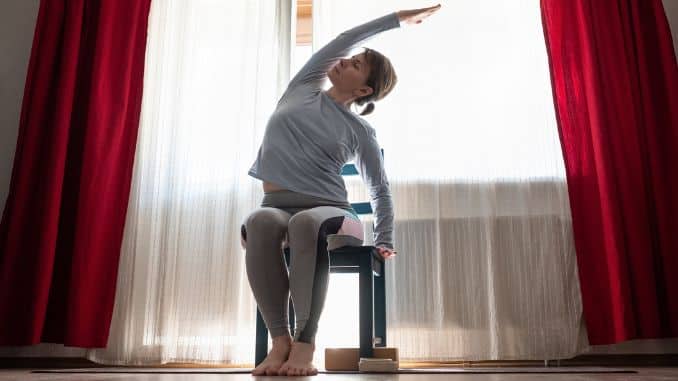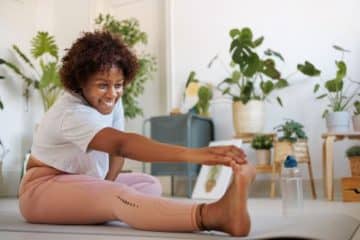Neck and shoulder pain is very common among people who spend long hours hunched over computers, which is why many turn to chair yoga for quick and gentle relief from neck pain. In Sweden, insurance data from a decade ago reveals that neck and shoulder problems accounted for a significant 18% of disability payments for musculoskeletal disorders.
Additionally, with the recent surge in computer use, fueled by factors like remote work and increased online entertainment since the pandemic began, neck and shoulder pain, along with lower back pain, are becoming increasingly prevalent.
Moreover, to combat these issues, chair yoga practices offer a convenient and effective way to improve posture, reduce pain, and increase flexibility.
Hours at a desk, endless screen time, and poor posture can take a serious toll on your neck and shoulders. Chair yoga offers an easy, accessible way to bring relief, boost flexibility, and restore balance—no mat required.
We’re also working on something exciting to help you move with ease and comfort every day. But for now, explore this blog for simple, effective chair yoga poses to release tension and feel better right where you are.
Target Muscles of Chair Yoga Practices
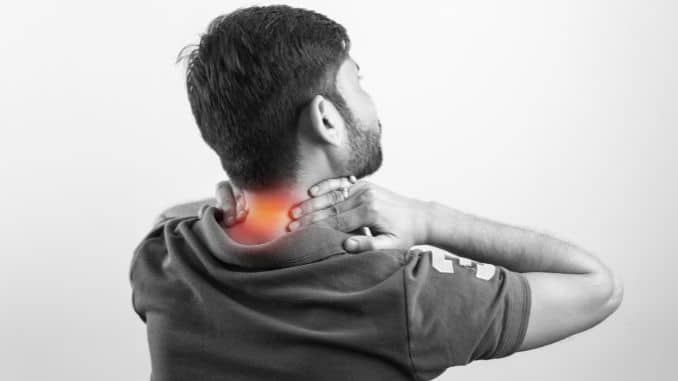
Chair yoga is a form of yoga practice specifically designed to be done while seated in a chair or using a chair for balance and support.
Additionally, the chair yoga poses specifically target neck and shoulder muscles, alleviating pain and enhancing flexibility.
1. Neck Muscles
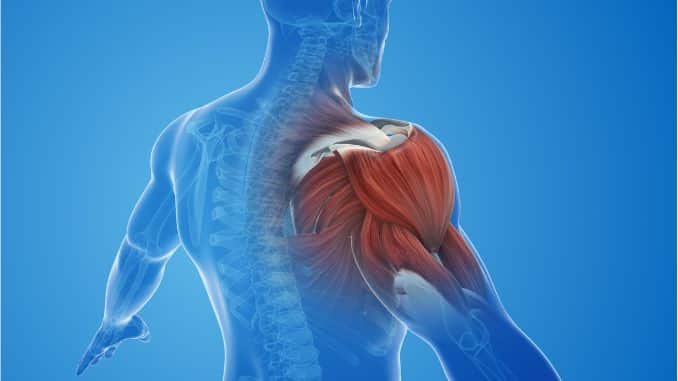
- Sternocleidomastoid [1]: Located on the sides of the neck, responsible for neck flexion and then rotation.
- Trapezius [2]: Spans the upper back and neck, involved in shoulder and then neck movements.
- Levator Scapulae: Elevates the scapula (shoulder blade), contributing to neck movement.
2. Shoulder Muscles
- Deltoids [3]: Additionally, covering the shoulder, responsible for various arm movements.
- Rotator Cuff Muscles (Supraspinatus, Infraspinatus, Teres Minor, Subscapularis): Stabilize and rotate the shoulder joint.
- Rhomboids: Assist in retracting the scapula, supporting shoulder movement.
Importance of Proper Posture in Chair Yoga
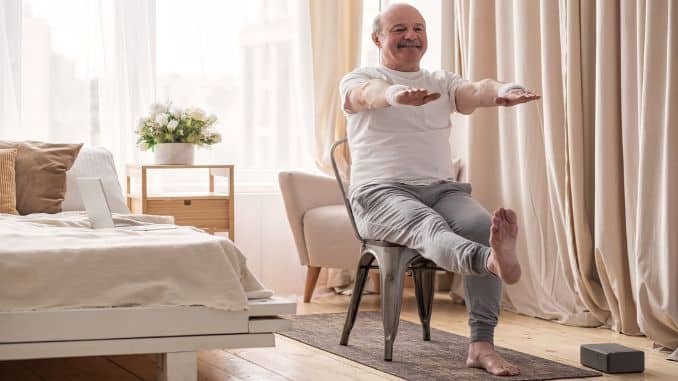
- Reduces Pain: Proper posture helps alleviate back, neck, and shoulder pain.
- Enhances Flexibility: Additionally, correct alignment allows for better stretching and then muscle engagement.
- Improves Breathing: Good posture opens the chest, promoting deeper and more efficient breathing.
- Boosts Circulation: Proper alignment also ensures better blood flow throughout the body.
- Increases Energy: Reducing strain on joints and then muscles leads to less fatigue.
- Prevents Injuries: Correct posture also minimizes the risk of strain and injury.
Different Chair Yoga Poses You Can Try at Home
1. Seated Breaths
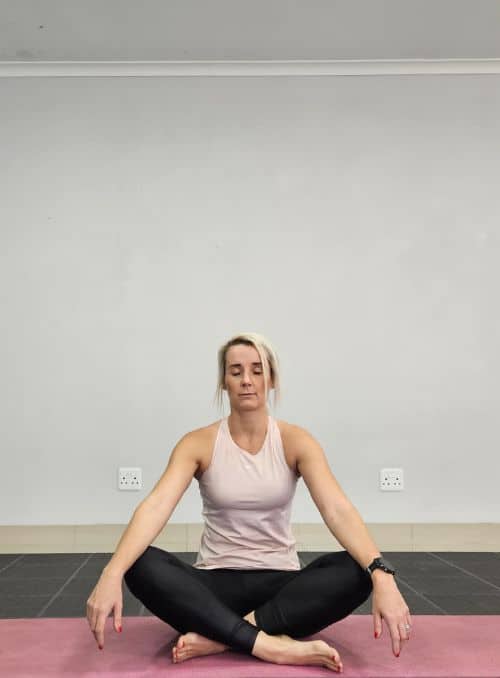
- Begin in an upright sitting position, while maintaining good alignment with your upper body.
- Then rest both hands on your upper legs and close your eyes.
- Moreover, hold this position for several deep belly breaths, in through your nose, out through your mouth.
2. Shoulder Rolls
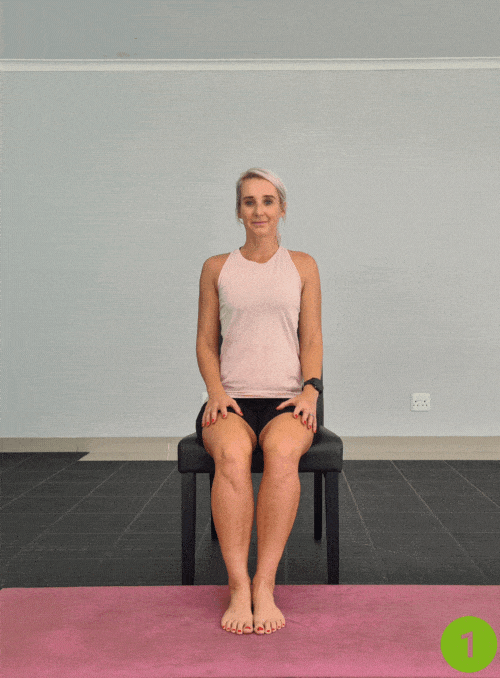
- Begin in an upright sitting position on a chair with your knees bent and then feet flat on the floor.
- Maintaining good alignment with your upper body.
- Rest both hands on your upper legs.
- Engage your core.
- Shift your shoulders forward, then roll them up and back until you feel resistance in your shoulder blades.
- Relax and repeat the movement.
3. Arm Circles
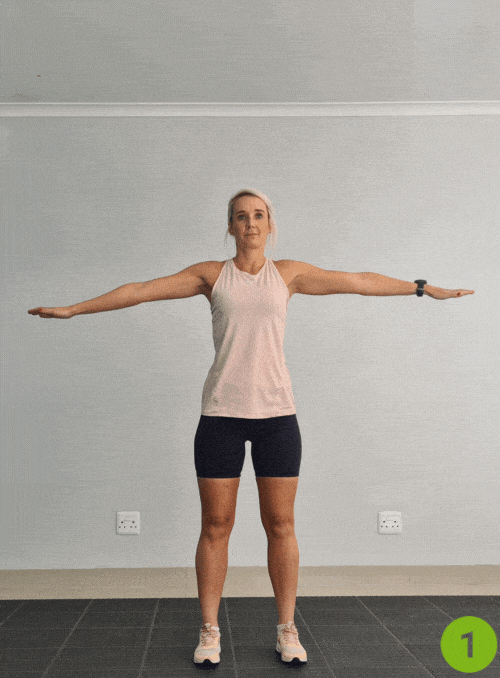
- Begin in an upright standing position, with your feet hip-width apart maintaining good alignment with your head, shoulders, hips, and then legs.
- Extend your arms out at your sides at shoulder height to open your chest.
- Engage your core and then move your arms in a large circular motion.
- Repeat the movement.
4. Side Neck Stretch
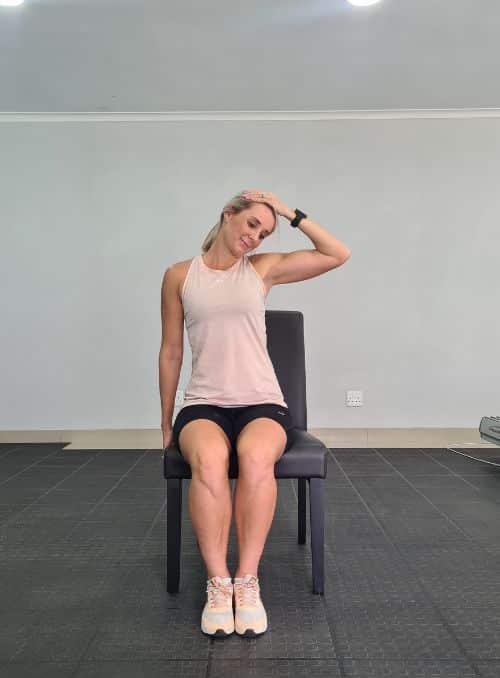
- Begin in an upright sitting position on the floor with your knees bent and feet close together, while maintaining good alignment with your upper body.
- Put your right hand, palm touching the right side of your face, then slowly pull your head towards your left shoulder, left ear touching the shoulder, then stop when you feel a gentle stretch on the side of your neck.
- Moreover, hold for several deep breaths, in through your nose, out through your mouth.
- Then repeat it on the opposite side.
5. Neck Forward Stretch
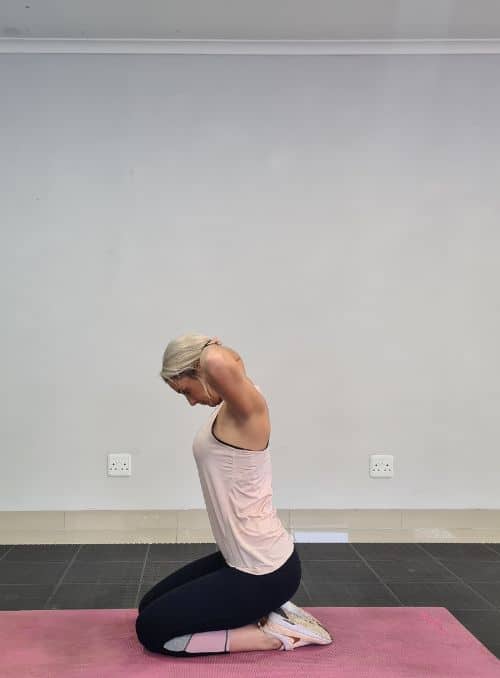
- Begin in an upright kneeling position on the floor and sit on your feet.
- Put both of your hands at the back of your head, then slowly pull your head down.
- Stop when you feel a gentle stretch on your back neck muscles.
- Moreover, hold this position for several deep belly breaths, in through your nose and out through your mouth.
6. Seated Cat Cow
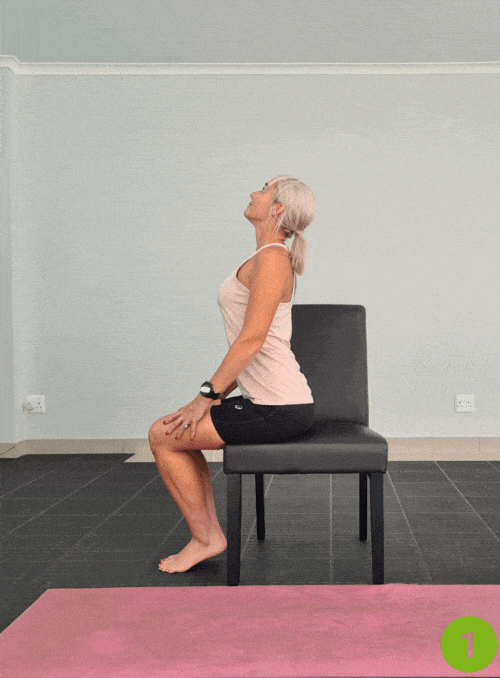
- Begin in an upright sitting position on the floor with your knees bent and feet close together, while maintaining good alignment with your head, shoulders, and hips.
- Place your hands on your upper thighs.
- Tighten your abdominal area and inhale as you tilt your head back and arch your mid back.
- Then, exhale as you alternate rounding out your midback and slowly dropping your head towards your chest.
- Repeat the sequence of movements.
7. Seated Side Bend
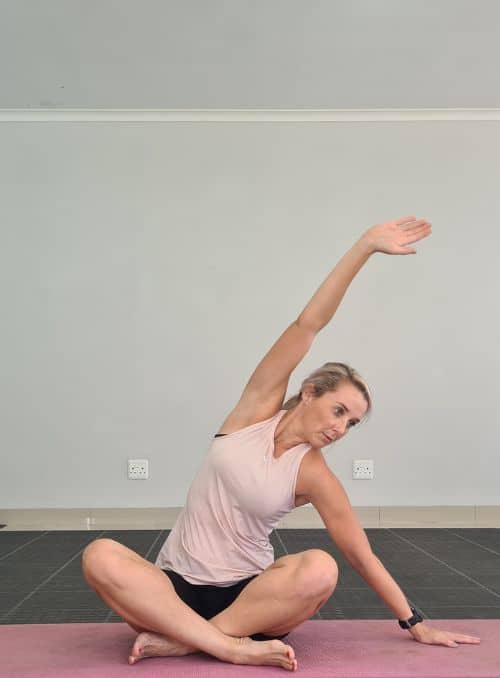
- Begin in an upright sitting position on the floor with your legs crossed in front of your body, while maintaining good alignment with your head, shoulders, and hips.
- Inhale and extend one arm overhead, placing your opposite hand on the floor beside you for support.
- Then engage your core and bend your upper body to the side, reaching over your head with your raised arm, to stretch your right shoulder.
- Moreover, hold this position for several deep belly breaths, in through your nose and out through your mouth.
- Slowly return to the starting position and repeat the movement on the opposite side.
8. Seated Spinal Twist
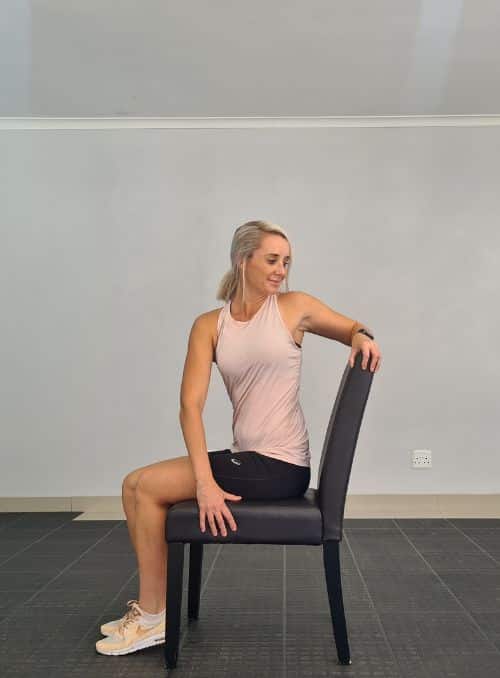
- Begin in an upright sitting position on the floor with your knees bent and feet close together, while maintaining good alignment with your head, shoulders, and hips.
- Engage your core and place your left arm at the back of the chair for support.
- Then, twist your upper body to the side as you place the left hand on the edge of the chair.
- Hold this position for several deep belly breaths, in through your nose and out through your mouth.
- Slowly return to the starting position and repeat the movement on the opposite side.
9. Eagle Arms with Forward Bend
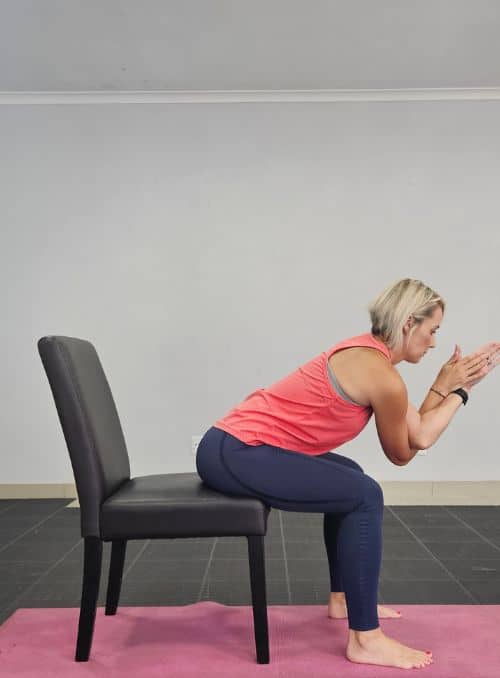
- Begin in an upright sitting position on the floor with your knees bent and feet flat on the floor maintaining good alignment with your head, shoulders, and hips.
- Maintaining good alignment with your head, shoulders, and hips.
- Moreover, cross your left elbow and arm over your right arm in front of your body at shoulder height, wrapping at the elbows and wrists.
- Inhale as you bring your arms up, drop your head back, exhale, and slowly hinge through your hips to bend your upper body forward.
- Afterward, repeat the sequence of movements with 5 repetitions.
10. Chest Stretch
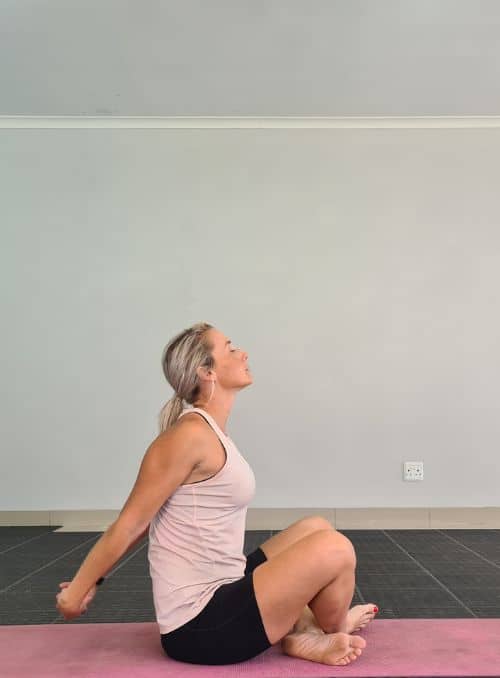
- Begin in an upright sitting position on the floor with your legs crossed in front of your body, while maintaining good alignment with your head, shoulders, and hips.
- Engage your core.
- Then arch your back while your hand is clasped together behind you and open your chest with your head falling back.
- Moreover, hold this position for several deep belly breaths, in through your nose and out through your mouth.
- Slowly return to the starting position and repeat the movement on the opposite side.
Benefits of Chair Yoga for Neck and Shoulder Relief
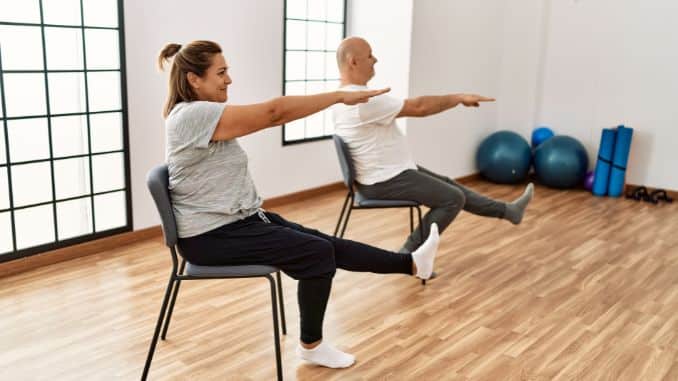
- Gentle and accessible for all ages and fitness levels, can be practiced anywhere with just a chair.
- Additionally, provides relief from tight shoulders and tight muscles while promoting overall well-being.
- Reduces stress and anxiety through slow, controlled movements and deep breathing.
- Improves circulation, increases flexibility, and strengthens neck and then shoulder muscles.
- Also reduces the risk of future pain and injury, neck injury, left foot, seated twist, relieves neck
Chair yoga benefits for older adults
Falls are a big worry for older people, with half of those over 80 falling each year. Moreover, a study in the International Journal of Yoga looked at how safe and helpful yoga was for older folks who might fall.
Furthermore, the study found that doing chair yoga twice a week for 8 weeks was safe and helpful.
Additionally, it improved how well people moved and made them less scared of falling. Chair yoga might make older people feel better and move better, improving their lives.
Dr. Loren Fishman, MD, Columbia University-trained physician and yoga therapist, author of “Yoga for Arthritis” and a leading authority on therapeutic yoga in the United States.
“Chair yoga is one of the most accessible and effective ways to counteract the damage of prolonged sitting. Even five minutes a day of mindful movement at your desk can significantly reduce neck and shoulder tension, improve posture, and enhance overall well-being.”
Conclusion
Chair yoga is great for health and feeling good. It can be changed to fit anyone, no matter how fit they are. Moreover, chair yoga helps people relax and move better, especially if they have neck or shoulder pain.
It makes you more flexible, stronger, and calmer. Additionally, chair yoga shows how anyone can feel better with mindful movement.
Love gentle stretches that bring relief? Pair your yoga routine with our upcoming Neck Aligner Tool for even better posture and flexibility.
Frequently Asked Questions
What is chair yoga, and who is it for?
Chair yoga is a gentle form of yoga that’s done while sitting on a chair or using a chair for support. It’s designed to make yoga accessible to people of all ages, fitness levels, and mobility conditions — including office workers, seniors, or anyone who spends long hours sitting. It’s especially helpful for those with limited flexibility or balance concerns.
How does chair yoga help with neck and shoulder pain?
Chair yoga targets key muscles like the trapezius, levator scapulae, sternocleidomastoid, and deltoids, which often become tight from poor posture or screen time. Through gentle stretches, controlled movements, and improved posture, it releases muscle tension, boosts flexibility, and enhances circulation, significantly reducing neck and shoulder discomfort.
How often should I do chair yoga to see results?
Consistency is key. Practicing 10–15 minutes a day, 3–5 times per week can lead to noticeable improvements in flexibility, posture, and pain relief within a few weeks. A study even showed that doing chair yoga twice a week for 8 weeks improved mobility and reduced fear of falling among older adults.
Can chair yoga help prevent future neck and shoulder problems?
Yes. Regular chair yoga not only relieves existing tension but also strengthens muscles, improves posture, and reduces strain on the neck and shoulders, which helps prevent future injuries and chronic pain especially for people with sedentary lifestyles or repetitive desk work.
Do I need any special equipment or experience to start chair yoga?
Not at all. All you need is a sturdy chair without wheels and a few minutes of your time. No mat, props, or prior yoga experience are necessary. The movements are simple, safe, and easily modifiable for your comfort level — perfect for beginners or anyone with mobility limitations.

